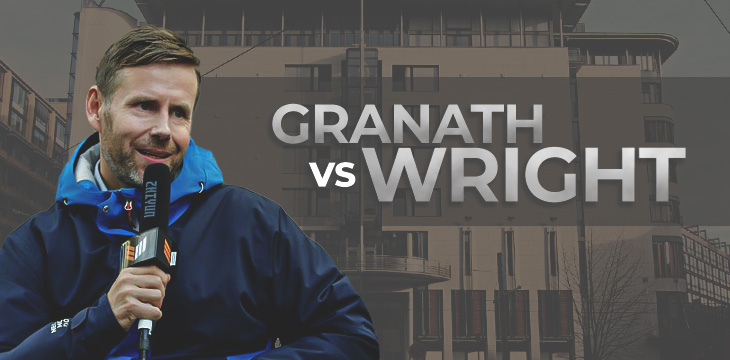|
Getting your Trinity Audio player ready...
|
As the Granath v Wright trial moves into its fifth day in Oslo, I decided to dive deeply into the ‘Lightning Torch’ experiment that catapulted Granath, aka Hodlonaut, to fame.
I wanted to understand why this was such a big deal and how it started and ended. I was not surprised to find it was a total nothing burger that calls Granath’s credibility into serious question, along with the rest of the BTC advocates who supported it.
What was the Lighting Torch?
The Lightning Torch was one of the most cringe memories in BTC-Core history, supposedly initiated by Magnus Granath AKA hodlonaut and pumped by BTC-Cult leaders like Jack Dorsey and others. I hope we will see some bombshell revelations in trial of how the Torch campaign launched.
— Truth_Machine, Follower of Jesus, Lover of Truth. (@cryptorebel_SV) September 13, 2022
In January 2019, a pseudonymous and relatively unknown Twitter user known as Hodlonaut sent 10,000 satoshis to someone he trusted via the Lightning Network and asked them to pass it on.
Expecting a handful of people to participate, Hodlonaut, who we now know is a Norwegian former school teacher Magnus Granath, was surprised to find that his idea took off and shot him to Twitter stardom among BTC advocates.
Before long, the ‘torch’ had been passed on by hundreds of people in dozens of countries, each adding 10,000 satoshis to the total payment. BTC bigwigs like Andreas Antonopoulos and Anthony Pompliano participated, along with Lightning Network advocates and investors like Jack Dorsey.
The BTC’ community’ made a huge deal of the Lightning Torch, yet, when I dug deeper into how it played out, I was totally underwhelmed. In all honesty, weekly BSV pew-pews are more exciting. Here are the facts I uncovered:
- The Lightning Torch was passed by a relatively tiny number of people in a few dozen countries. The math indicates about 600 people participated.
- Each recipient added 10,000 satoshis, which was worth about $0.34 at the time.
- It hit a hard-coded ceiling of 4.29 million satoshis ($217.78) before being donated to Bitcoin Venezuela.
- The experiment ended because the Lightning Network could not handle payments any larger than this and only a handful of highly technical people know how to use it.
In summary, this experiment only showed the limitations of the Lightning Network. In the words of one of its largest advocates, Andreas Antonopoulos, the author of Mastering Bitcoin:
To be able to ‘play’, your [lightning network] node must be well connected, with enough capacity and well balanced (local vs remote balance). Since a lot of that is not fully automated yet, it poses a challenge for node operators and an opportunity to test their setup. As the amount gets bigger, it is harder and harder to find routes and keep it going.
Does this sound anything like the infinitely scalable P2P electronic cash system Satoshi Nakamoto released in 2009?
So, a few hundred BTC maximalists in a few dozen countries sent $0.34 cent compounding payments to each other on a third-party payment processor that hit a limit of $217.78, and this catapulted Granath to BTC superstardom? And here I thought the Lightning Torch was a huge deal based on its mythical status in the BTC world.
Magnus Granath, the man, is no match for the mythical Hodlonaut
During the Satoshi Trial in Oslo, Magnus Granath was forced to step out from behind his Twitter pseudonym and into the light. As Dr. Wright warned him repeatedly, hiding behind a Twitter avatar would not save him from the consequences of defamatory remarks, and so it has come to pass.
Granath’s initial statements, the witnesses he has chosen to bring forward, and his general demeanor in the courtroom tell us much about him. We’ve seen bizarre body language, random outbursts of laughter, and a complete lack of self-awareness. Granath has presented nothing of substance, instead repeating meaningless BTC Twitter maxims, even subjecting the judge to a lecture on the benefits of the carnivore diet and the importance of cyberbullying to BTC culture.
As for his ‘expert witnesses,’ one who was tasked with debunking Dr. Wright’s Jean-Paul Sartre post failed to recall what the post said and did not know who the French philosopher and playwright was. Naturally, not knowing these basic facts, this witness was immediately discredited and could not possibly understand the significance of this post.
Other interesting facts have emerged, too. Granath has always been painted as an innocent school teacher who was attacked by Dr. Wright, an evil capitalist with deep pockets. However, it has now come out that he works for a Norwegian investment firm managing Blockstream’s account, showing that his connections to the murky world of BTC run much deeper than they initially appear.
In summary, Granath appears to be an unhinged BTC maximalist and an opportunist who has chased into the tune of $1.4 million in donations while landing a cushy corporate job for viciously attacking and defaming Bitcoin’s inventor.
As for his Lighting Torch experiment, my conclusion is that it was nothing but a demonstration of why the Lightning Network is unsuitable as a global Bitcoin scaling solution. Of course, anyone who understands Bitcoin already knew that it scaled on-chain, as its inventor said, and that the Lightning Network was a messy patchwork quilt of money transmitters designed solely to lose transaction logs and make Bitcoin untraceable while filling the pockets of its investors.
As this trial goes on, BTC supporters will likely continue to see that the towering figure they have rallied behind is nothing but a technically illiterate cyber troll and that the emperor truly has no clothes.
Jack Dorsey and others helped catapult Hodlonaut to fame when he launched the Lightning Torch, but the man behind the mask is a shadow of the mythical character his online persona became.
Check out all of the CoinGeek special reports on the Granath vs Wright YouTube playlist.

 12-13-2025
12-13-2025 





